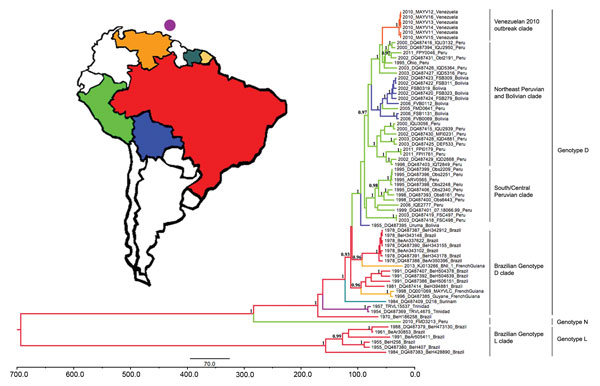Volume 21, Number 10—October 2015
Research
Evolutionary and Ecological Characterization of Mayaro Virus Strains Isolated during an Outbreak, Venezuela, 2010
Figure 3

Figure 3. Bayesian maximum clade credibility tree for Mayaro virus in the Americas on the basis of 1,731 nt of envelope (E2–E1) genes, Venezuela, 2010. The purple circle above Venezuela indicates the island of Trinidad. Taxon labels indicate year of isolation, strain designation, and country of isolation. Terminal branches of the tree are colored according to the sampled location of the taxon at the tip. Internal branches are colored according to the most probable (modal) location of their parental nodes. Nodes with posterior probabilities (clade credibilities) ≥0.90 are indicated in black. Scale bar indicates time in years.
1Current affiliation: Andrews University, Berrien Springs, Michigan, USA.
Page created: September 22, 2015
Page updated: September 22, 2015
Page reviewed: September 22, 2015
The conclusions, findings, and opinions expressed by authors contributing to this journal do not necessarily reflect the official position of the U.S. Department of Health and Human Services, the Public Health Service, the Centers for Disease Control and Prevention, or the authors' affiliated institutions. Use of trade names is for identification only and does not imply endorsement by any of the groups named above.